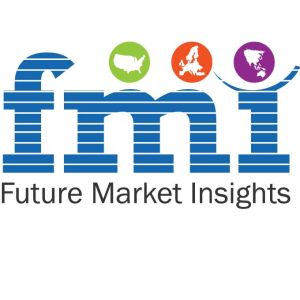Rubber Sand Market Development Analysis 2018-2028Posted by vakhas on July 12th, 2019 Rubber Sand Market Overview Rubber sand is a premium mixture of sand infill and crumb rubber, which is a great alternative to other infill options. Rubber sand particles are granules that offer a softer and lightweight alternative to sand and other hard materials when used in non-skid applications. Rubber sand particles provides a skid-resistant surface and are used in most acrylic coatings. Acrylic coatings are durable water resistant coatings which has an excellent color retention characteristic. It also provides strength to the structure by preventing cracks. They are durable, reliable and provides friction on the surface. Rubber has high tensile strength and is chemically stable and practically non-destructible. Due to these features, rubber sand is used as a mixture to create a backfill material in Road Constructions. Increasing number of construction companies are researching in this area, which is creating a surge in the rubber sand market. Many countries are trying to invest in this technique as it also serves as an efficient disposal method of rubber, hence minimizing environmental hazards. The rubber sand is also used by paint industries to create/manufacture durable and pop resistant paints. Rubber sand particles are water resistant and have floating characteristics because of the presence of rubber particles. Therefore, they are ideal for nautical resurfacing applications and are used in manufacturing major marine paints. Rubber sand market is a vast market consisting of Infrastructure Development Companies, Auto Companies and Boating and Ship Building industries among others as end users of rubber sand. Rubber sand market is facing a substantial surge in the demand and growth, and as per current trends, it is expected to grow at a huge CAGR rate on a Year-on-Year basis. The Asia Pacific is a major contributor to the growth of rubber sand market as it holds comparatively higher automotive manufacturing plants across the globe and has been witnessing a significant rise in infrastructural development. Request Free Sample Report@ https://www.factmr.com/connectus/sample?flag=S&rep_id=3398 Rubber Sand Market Drivers The growing demand for lightweight substitutes to sand and other hard materials is one of the factors driving the growth of rubber sand market. The non-skid application of rubber sand has attracted various industries, such as Construction and Tyre among other industries driving the growth of rubber sand market. The water-resistant application of rubber sand has attracted paint manufacturing industries to create durable, scratch-resistant and pop resisted paints. Environmental benefits, such as efficient rubber disposal, have also attracted various companies towards using waste rubber into converting them into rubber sand for effective use resulting in driving the demand and growth of rubber sand market in a positive direction. Rubber Sand Market Competitive Restraints Additional cost incurred in developing the mixture of rubber and sand particles for creating rubber sand increases the overall cost of rubber sand. Companies running on a tight budget may not afford the rubber sand and instead go for traditional backfill mix for road constructions. In the same lines, budget automobile companies cannot increase their cost by purchasing rubber sand mixed paint as their products are highly price sensitive. These factors create a huge restrain in the rubber sand market growth. Rubber Sand Market Trends The rubber sand market is expected to generate a double-digit CAGR for the forecast period. The growth of rubber sand market is backed by development of new ways of using rubber sand in various applications such as acrylic paints, road constructions and skid-proof surfaces for tyres. This is leading to the rapid growth in the rubber sand market. Rubber Sand Market Segmentation The rubber sand market can be segmented on the basis of product type and industry. Rubber sand market segmentation on the basis of product type:
Rubber sand market segmentation on the basis of industry:
Rubber Sand market Regional Overview America and Middle East along with the APAC region covers the largest market share of rubber sand market in the global rubber sand market. The Middle East and APAC region specifically China, India and South Korea contributes to a large extent in the overall share because of the rising infrastructure development. Key Countries Profiled are
Rubber Sand Market Key Players
The research report presents a comprehensive assessment of the Rubber Sand Market and contains thoughtful insights, facts, historical data and statistically supported and industry-validated market data. It also includes projections using a suitable set of assumptions and methodologies. The research report provides analysis and information according to Rubber Sand Market segments such as geographies, base, technology, and end-use industries. Rubber Sand Market report covers exhaustive analysis on:
Regional analysis for Rubber Sand Market includes:
The report is a compilation of first-hand information, qualitative and quantitative assessment by industry analysts, inputs from industry experts and industry participants across the value chain. The report provides an in-depth analysis of parent market trends, macro-economic indicators, and governing factors along with market attractiveness as per segments of Rubber Sand. The report also maps the qualitative impact of various market factors on market segments and geographies of Rubber Sand Market. Report Highlights:
Like it? Share it!More by this author |


